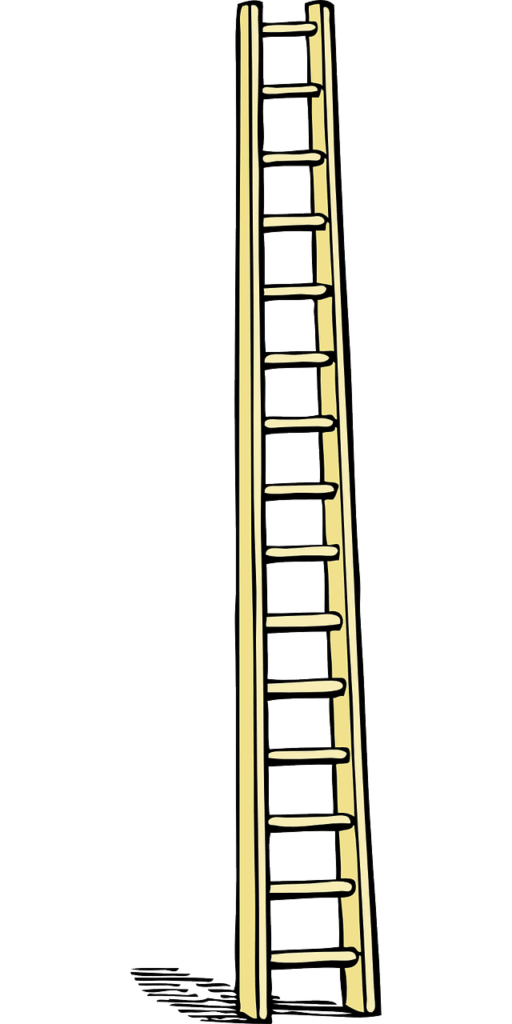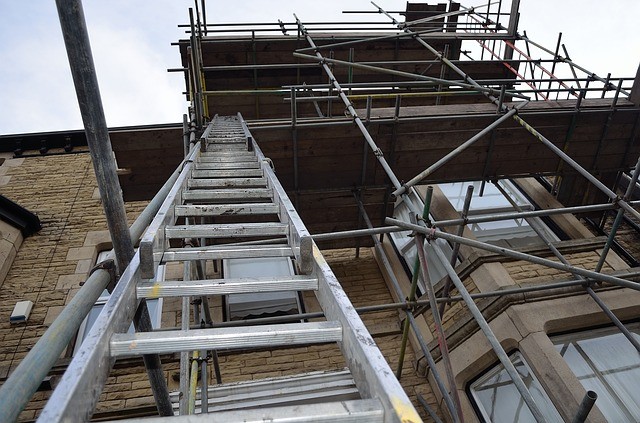Hopefully you came across our previous post, Ladder Safety: From Complacent to Aware.
The summary is this: complacency towards ladder safety is a huge risk, but a shift in an attitude towards ladder usage can help reduce the chance of accidents.
We also promised a beefy list of ladder safety tips…. So without further ado, here it is:
- 3 Points of Contact

Yes, you will hear this in every single ladder safety training ever that has existed in the history of ladder safety training. Keep 3 points of contact with your ladder when you’re climbing. Two hands and one foot, or two feet and one hand. It will help you maintain stability and balance as you climb up or down the ladder.
- Don’t step on the top rung
That silly little sticker is there for a reason (hey there, engineering controls!). Do not step on the top rung. Doing so makes you unstable and the ladder top-heavy. You could slip off the top because your center of gravity is way too high. If your ladder’s too short, get a different one. If it’s in the “other garage” or “across the way” or “in the truck”…. it’s worth the trip, not the fall.
- Use the right ladder for the task

Not all ladders are created equally. The one we use inside the house shouldn’t be the same one you use to clean the gutters or paint a stairwell. Carefully read all the labels before deciding which ladder to use for your work.
- Step Ladder
- Extension Ladder
- Platform Ladders
- Move your ladder to avoid over-reaching

Imagine you’re painting a house, and have one section left to paint. It’s almost out of your reach, but your arm can get at it if you just lean over just a little…
Should you:
A – Put down your brush, climb down the ladder, take a breather, move the ladder, climb up the ladder, take a breather, and cleanly finish your job, or;
B – Reach and hope for the best.
Always choose A.
Overreaching is a really easy way to fall right off your perch, especially if you’re dealing with wind.
A good rule of thumb is to keep your belt buckle between the ladder rails.
- Thoroughly inspect your ladder
Before your big climb, make sure to give the ladder a once-over. Reference this checklist:
Ladder Inspection Checklist
- Check for cracks, bends, splits, or corrosion.
- Check all rungs and step connections.
- Make sure the ladder’s feet work properly and have slip-resistant pads.
- Make sure rung locks and spreader braces are working.
- Be sure all bolts and rivets are secure.
- Make sure steps, rungs, and other ladder parts are free of oil, grease and other materials.
- On extension ladders, make sure the rope and pulley work and the rope is not frayed or tangled.
If you find ANY damage to a ladder, label it “DO NOT USE” and remove it from the work site for repair or disposal.
- Make sure the ladder is at the correct angle.

According to a hazard alert released by Michigan State University in 2016, incorrect extension ladder setup angle causes 40% of ladder falls.
So, what’s the correct angle?
75 degrees.
Translation?
For every 4 feet in ladder height, place the ladder 1 foot away from the structure it’s resting on.
- Don’t carry tools up in your hands.
Really, you might fall. Remember your three points of contact. Use a tool belt. Problem solved.
- Always face the ladder when you’re climbing.
Up or down, always face the ladder. It keeps your center of gravity just that – centered.
- Make sure everything is locked and engaged
If you’re working with a step ladder, make sure that everything that can lock is locked before you even think about climbing it. The second one of those joints gives because it wasn’t properly in place is the second you fall.
- Don’t step on the back rungs
The back rungs of step ladders are not built to be climbed on, and are therefore not stable if climbed on. Best case scenario is if you make it to the top and nothing bad happens. Worst case scenario is if you climb and tumble and fall on your back. Somewhere in the middle is when you take one step and the ladder snaps back to hit your square in the nose. Don’t be that person.




